Cane Corso dogs are a mastiff-type breed, massive and heavy.
The Cane Corso dog breed (Italian Mastiff) is a big-boned and muscular dog of the mastiff type, more athletic than an English Mastiff, and not as heavy as its cousin the Neapolitan Mastiff, but still very imposing and intimidating. Some people refer to the breed as the ‘Mike Tyson of the dog world’.
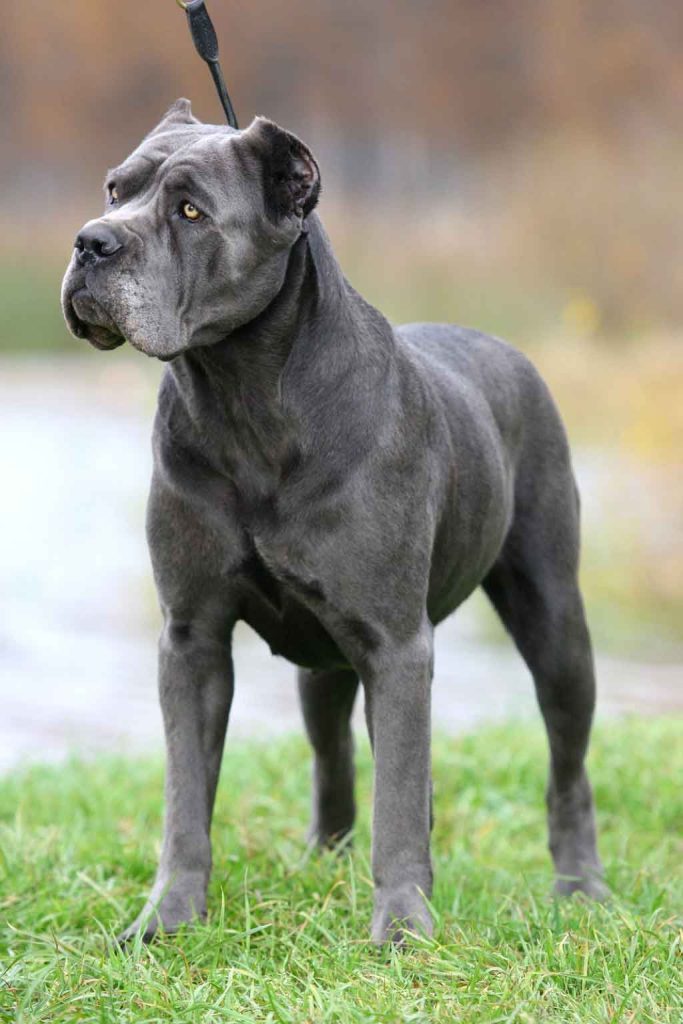
Cane Corso Dogs – Temperament
This breed has 2 sides to its temperament. On the one hand, a Cane Corso will become very attached to its owner and be affectionate and gentle in the home and around family members. On the other hand they often have a ‘grumpy’ nature with people outside the family and with other dogs, and may be difficult to manage when visiting the vet.
This breed needs early and thorough socialization as a puppy, to get it used to new and strange people and animals. This socialization must be continued every day up to at least one year of age, to reduce the dog’s suspicion of strangers, and increase its tolerance to other animals.
The Cane Corso is a confident and assertive breed, and needs a firm hand from Day 1 to establish the owner’s dominance, otherwise the dog will start to think it is the ‘alpha male’ in the house, and become difficult to handle.
This breed needs a confident, assertive and experienced owner. They are NOT for the first-time or inexperienced dog owner.
Cane Corso Dogs – Breed History
The Cane Corso can trace its roots back to the ancient Molossan dog breed that originated in Greece. They were used by the Molossians as guard dogs and working dogs. When the Romans invaded the region of Epirus in what is now Greece, they discovered the Molosser dogs, and were impressed with their size, strength and bravery.
The Romans took a number of the Molosser dogs back to Rome, and bred them with their own Italian dogs to develop their military breed, called Canis Pugnax. This translates as ‘war dog’.
The Romans used their war dogs as camp guards, and also in battle, wearing metal collars with spikes and sometimes a degree of body armor. They were trained to charge at the enemy, taking down as many men as possible. Their ears and tails were docked to make them appear more intimidating.
As breeding continued in Italy over hundreds of years, 2 distinct breeds emerged. One became the Neapolitan Mastiff, and the other became the Cane Corso. These dogs were involved in several other activities, such as hunting big animals like wolves and bears, in the gladiator arena, and in bull-fighting.
After Roman times the Cane Corso changed over to guard dog roles, protecting homes and livestock, helping to drove cattle, and in hunting wild boar and deer. As years passed, they were used less for hunting, and pretty much specialized in guarding farms, estates and livestock.
The 2 World Wars had a drastic effect on Cane Corso dogs. Like many large breeds, they almost died out. Most Italian men were conscripted, and farms were left empty and dogs abandoned. Then, after the wars, there was less need for big farm dogs, hunting dogs or guard dogs.
The few remaining thoroughbred dogs were largely in rural and remote areas of Italy. It wasn’t until the 1970s that a group of Cane Corso enthusiasts agreed to try to rescue the breed, by collecting as many good quality dogs as possible, and start a breeding program.
The breed was finally recognized officially by the Italian Kennel Club in 1994, and by the FCI in 2007. The American Kennel Club accepted the Cane Corso in 2010.
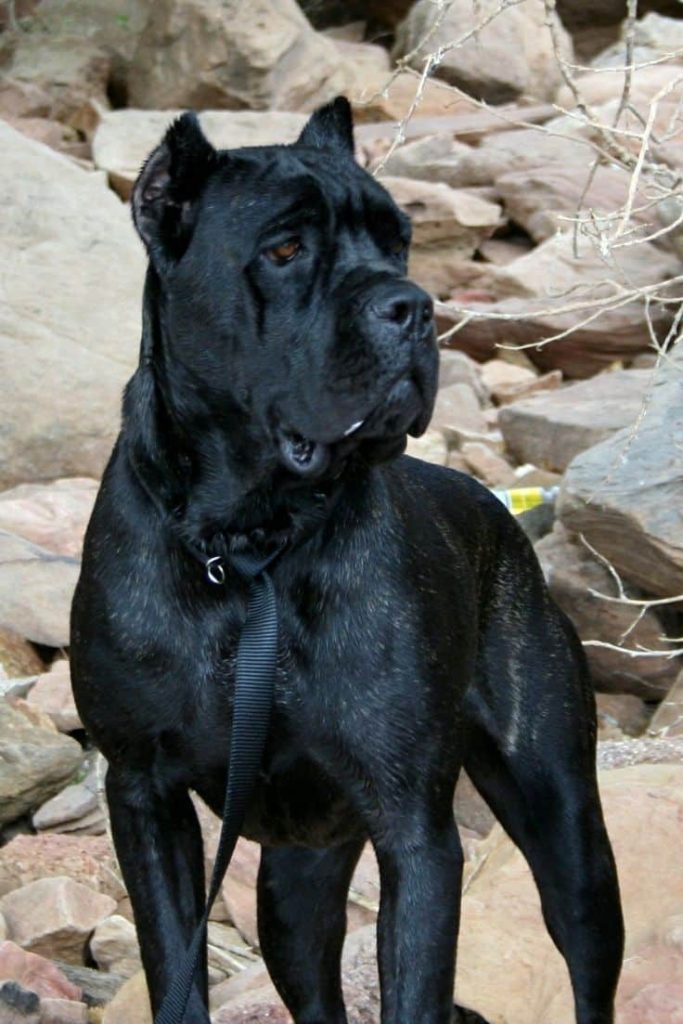
Vital Statistics;
Height; 25 inches to 28 inches (male) and 23 inches to 26 inches (female).
Weight; 100lbs – 110lbs (male) and 90lbs – 100lbs (female).
Life Span; 9 to 12 years.
Color;
Black; Black brindle; Chestnut brindle; Fawn;Grey; Grey brindle; Red.
Grey or Black mask.
Cane Corso – Ease of Training
The Cane Corso dogs are not difficult to train. They are intelligent and willing to please their owners. However they need to know that their owner is the one in charge, and so early and thorough socialization is needed, with consistent discipline from a very young age.
As well as socialization, puppy training classes are an excellent idea, partly to introduce the dog to the idea of learning something, and partly to get the dog used to being around other, strange dogs.
Because this breed is so big and powerful, with (possibly) a grumpy and intolerant nature, they MUST be trained effectively.
Protection
If you are looking for some protection with your dog, this breed is up for the job. First of all, there is the intimidation factor, although this depends a bit on whether the dog’s ears are cropped or not. If uncropped, the ears flop forwards, like a Labrador. When cropped, the dog appears a bit more menacing.
(For the record, I personally do not like ear cropping nor tail docking, although I understand that tail docking in some working breeds reduces the chance of injuries).
But ears cropped or not, the Cane Corso is like a ball of muscle, with a huge head and a fearsome expression. While they may be soft and affectionate with their family, they look dangerous to most other people. The intimidation factor alone is usually enough to deter would-be intruders.
From their heritage as guard dogs, they are usually alert and aware of what’s going on the the vicinity. If a stranger approaches, the Cane Corso will bark, and loudly. This is a big dog with a big, deep chest, and their booming bark will be heard some distance away.
So, they make good watchdogs, and are also good guard dogs.
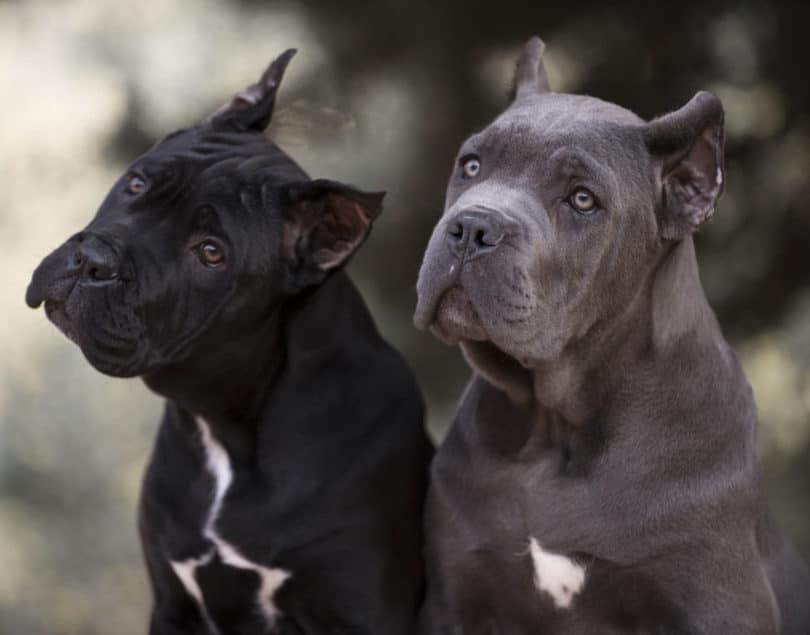
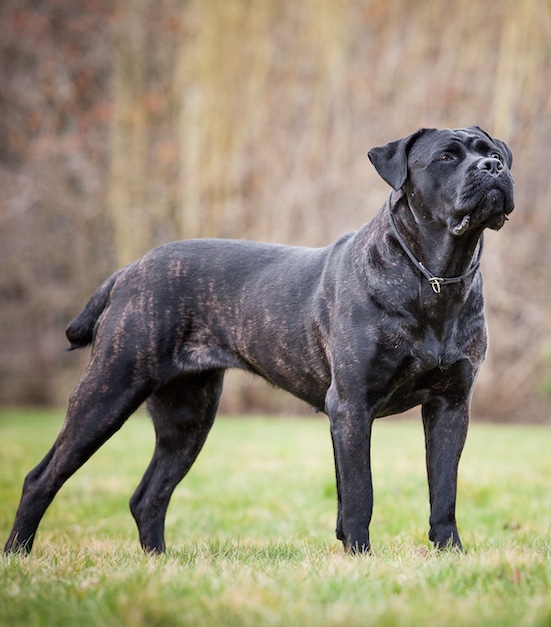
Grooming
This breed has a double coat. Their is a dense undercoat that sheds all the time, but more in Spring, as the temperatures warm up. The top coat is short-haired and waterproof.
A daily brushing with a medium bristle brush will keep stray hairs under control, but in the shedding season you can expect hairs around the house and car! A bath is only rarely needed, if the dog gets particularly muddy or starts to get that ‘doggy’ smell.
The dog’s claws should be checked every month and trimmed if needed. Ears should be checked weekly for signs of injury, redness, swelling or infection. The teeth should be brushed every day, using a dog toothpaste, NOT human toothpaste, as it contains Xylitol.
5 Ways to Tell if You Have a Purebred Cane Corso
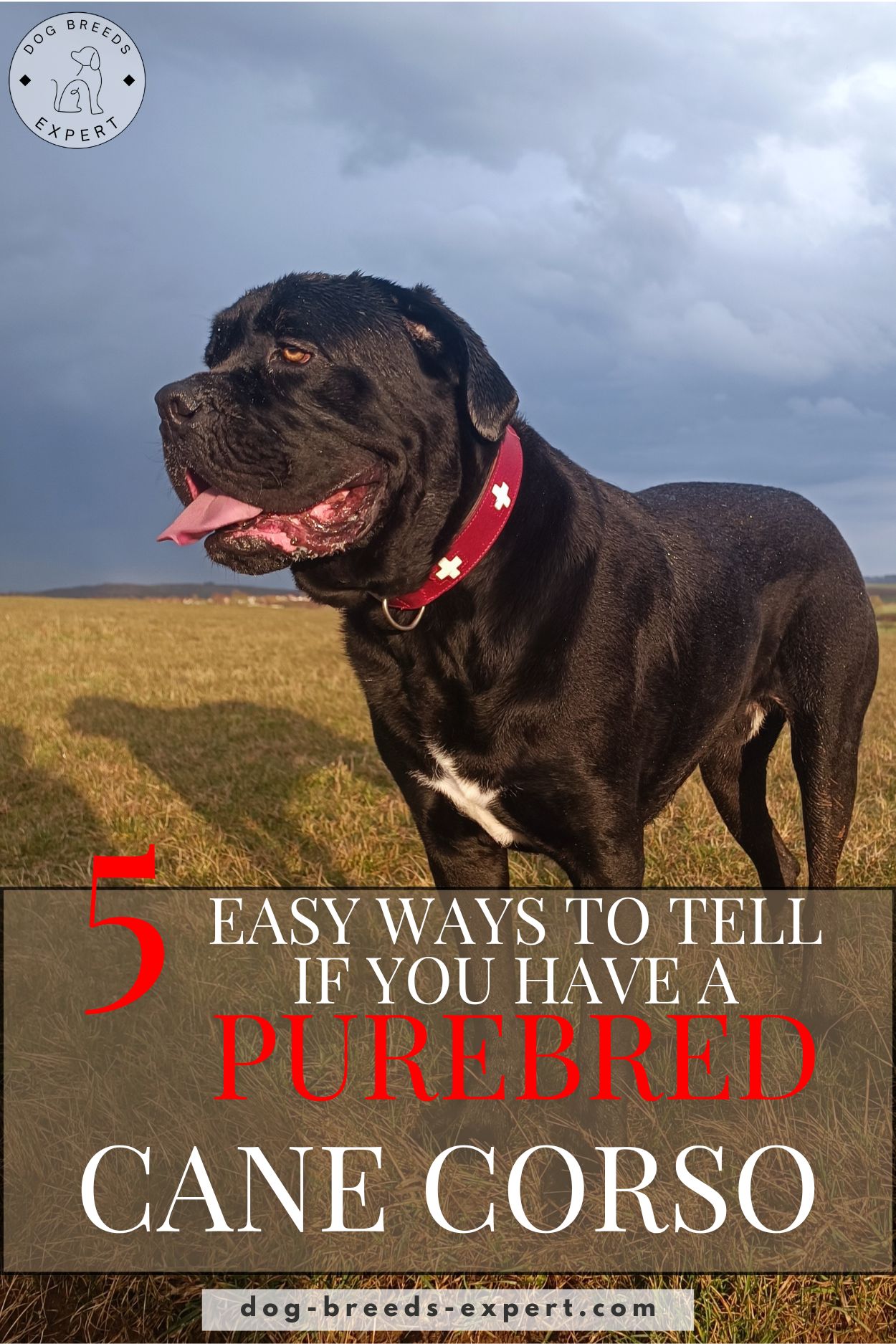
Examine Physical Features
A purebred Cane Corso is a large, muscular, and athletic dog with a broad, imposing head and a pronounced stop. Their eyes are medium-sized, oval, and set straight, while the ears are often cropped and set high, though natural ears are also accepted. The muzzle is broad and deep, and the tail is thick at the base and typically docked (source).
Check Coat Type and Color
Cane Corsos have a short, dense, and stiff coat that lies close to the body. Acceptable colors include black, gray, fawn, red, and brindle, often with a black or gray mask. Long, wavy coats or unusual colors may indicate a mixed breed background.
Observe Temperament and Behavior
Purebred Cane Corsos are known for their confident, protective, and loyal temperament. They are intelligent, easy to train, and naturally inclined to guard their home and family. If your dog is assertive yet affectionate with family, these are classic traits of the breed.
Consider Size and Build
A purebred Cane Corso typically stands 23.5 to 27.5 inches tall at the shoulder and weighs 90 to 120 pounds. Their frame is powerful and athletic, with a deep chest and straight, strong legs. If your dog fits these size standards and has the breed’s robust build, it’s a good indicator of purebred status.
Review Pedigree and Documentation
The most reliable way to confirm your Cane Corso’s purebred status is through pedigree papers from reputable organizations like the AKC. These documents trace your dog’s lineage and verify its breed authenticity. If you don’t have access to papers, a canine DNA test can also provide valuable insight into your Cane Corso’s background.
Health Considerations
This a generally healthy breed, with few genetic issues, but there are a couple of conditions to be aware of;
- Hip dysplasia
- Elbow dysplasia
- Eyelid problems
- Bloat (gastric dilation volvulus)
The risk of your dog developing life-threatening bloat can be reduced by feeding them in 2 or 3 meals over the day rather than one big meal, and by using an anti-gulping bowl to slow down how quickly they can eat.
Famous Cane Corso Dogs
I couldn’t find any famous Cane Corso dogs; If you know of one, please let me know, using the Contact Me link, Thank you!




yes Cane corso are not difficult to train. I am first time owner of cane corso. I have learn a lot of info to your articles.
please keep it up.
Thank you so much